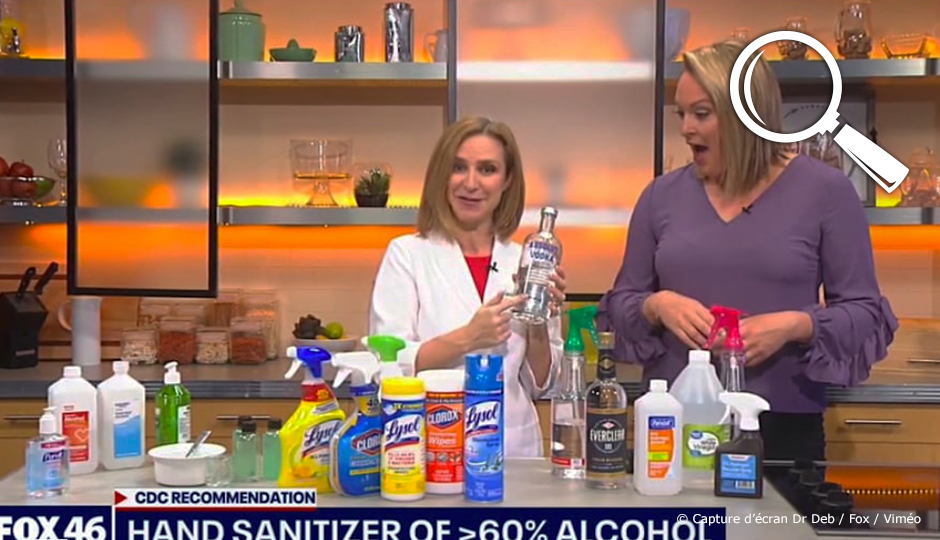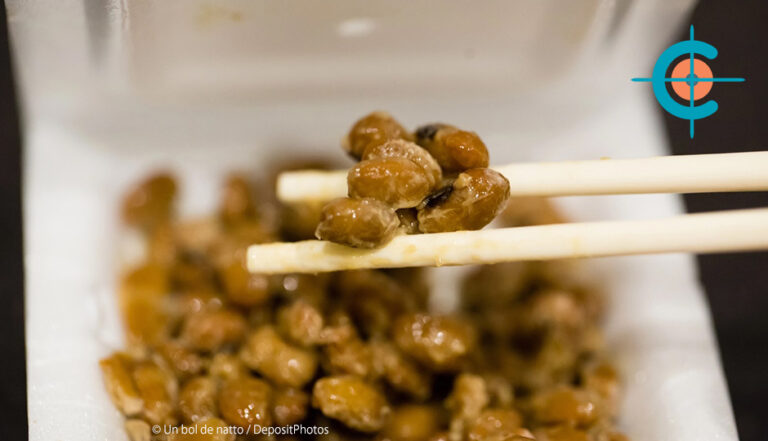Auteur : Agence Science Presse - Catherine Crépeau
A second wave of the coronavirus epidemic could cause a new shortage of hand sanitizer. People could be tempted to turn again to home recipes circulating on Facebook, TikTok, Instagram or YouTube. Is this a good idea? The Rumour Detector sums up 6 myths.
1) No, it doesn’t work with less than 60% alcohol
Most hand sanitizers are alcohol-based. This may be rubbing alcohol or ethyl alcohol. Also known as ethanol, ethyl alcohol is found in alcoholic beverages. To be effective and kill most of the bacteria and viruses, hand sanitizers must contain at least 60% alcohol. That’s according to Health Canada and the American Centers for Disease Control (CDC). In lower concentrations, they only reduce the growth of germs instead of killing them. However, nothing is gained by increasing the concentration beyond 80%.
A quick calculation shows that several recipes found on the Internet don’t reach the recommended threshold, once alcohol is mixed with the other ingredients. For example, one formulation is composed of 2/3 cup (170 mL) rubbing alcohol (or isopropyl alcohol) and 1/3 cup (85 mL) aloe vera gel. This gives a 46.67% alcohol mixture, which is inadequate. The same recipe made with 90% alcohol reaches a final concentration of 60%. That’s enough. To find the total concentration of a mixture, multiply the alcohol percentage of the initial ingredient by the quantity used. Then divide by the total quantity of the mixture (70 x 170 mL / 255 mL = 46.67%).
On its website, the World Health Organization (WHO) describes a mixture of over 80%.
2) No, it doesn’t work with vodka
Alcohol does the work of disinfection. The most effective alcohol to “kill” viruses is ethanol (or ethyl alcohol) that is 90% pure. But that doesn’t mean you can use vodka or other spirits. The alcohol concentration of these beverages is generally around 40%. That isn’t high enough to disinfect. And this percentage decreases when vodka is mixed with other ingredients.
3) No, it doesn’t work with every perfume
In principle, most perfumes have a high enough ethanol concentration — over 60% — to be used as antiseptics. But watch out. The recipes and alcohol concentration vary from one perfume to another. Given this, it’s hard to see why you’d spend a fortune on perfume to use it as a disinfectant!
4) Yes, it can be toxic
No matter what the recipe, Health Canada advises against making your own disinfectant. That’s due to the risks of skin irritation or allergic reactions. To maintain a high alcohol content, some people are tempted to use only alcohol. But they risk obtaining a product that can dry the skin so much that it cracks and becomes infected.
This winter, Canada saw a major increase in poisoning cases linked to cleaning products. This includes ingestion of alcohol-based hand sanitizers. According to poison control centres, these cases surged by 58% in February-March, compared to last year.
Also, not every type of ethanol is acceptable. For example, industrial alcohol contains impurities that aren’t present in the types of ethanol authorized by Health Canada. On June 6, Health Canada recalled five commercial hand sanitizers containing industrial alcohol. It recommends using only the hand sanitizers it authorizes.
5) No, hand sanitizer can’t catch fire
Many online publications show a burned car door. They imply that a bottle of hydroalcoholic gel can catch fire when it is left in vehicle in the hot summer sun.
It’s true that alcohol is flammable. But it’s impossible for a gel to combust spontaneously, even in high heat. For such an accident to occur, the temperature has to reach at least 360 degrees Celsius. University of Arizona researchers have proved that the maximum temperature reached inside a car is 70 degrees Celsius. Some claim the risks are higher if the bottle is open. This isn’t the case, because water is added to hand sanitizer. However, ethanol can evaporate and reduce the product’s effectiveness.
For a bottle of alcohol-based hand sanitizer to catch fire, you would have to expose it to a direct heat source, such as a match. The alcohol vapours then would feed the flame. Caroline Piché explains. Ms. Piché is Executive Director of the Association pour le développement et l’innovation en chimie in Québec, an association for development and innovation in chemistry.
6) No, hand sanitizer isn’t better than soap
You can wonder why people are complicating their lives producing homemade hand sanitizer and looking for scarce ingredients. That’s because soap and water are more effectives against most viruses than hydroalcoholic gel. But you have to wash your hands for at least 20 seconds. Applying hand sanitizer should be reserved for situations where soap and water aren’t available. At store entrances, for example.





